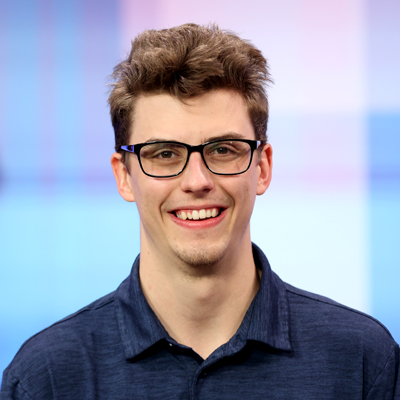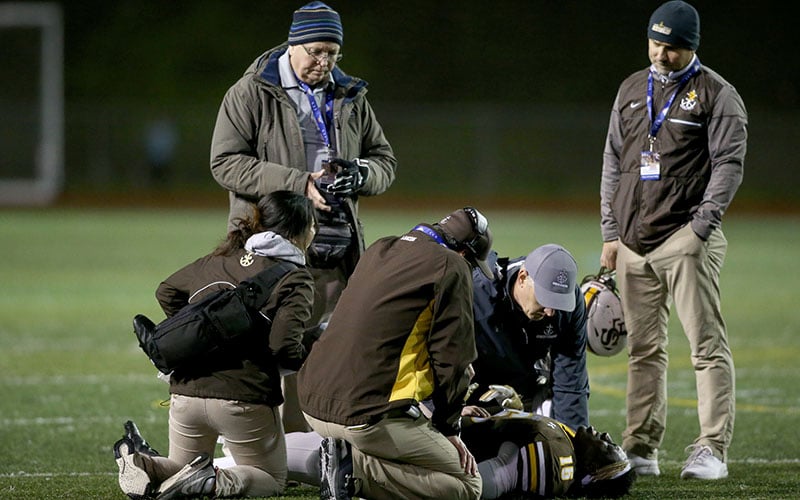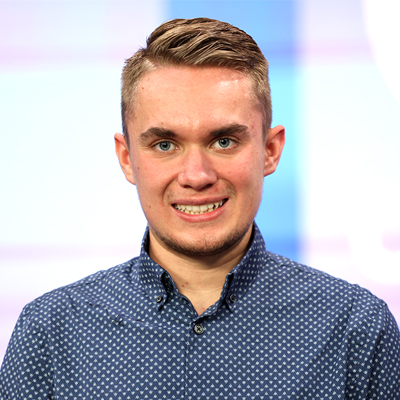PHOENIX – Keeping about 700 athletes at Sandra Day O’Connor High School healthy is a demanding task.
However, a cutting edge, college-level athletic training program at the north Valley school is not only providing quality treatment to all of those Eagles athletes, it is giving future athletic trainers valuable hands-on experience in the process.
Sandra Day O’Connor employs three full-time athletic trainers, who double as teachers in a sports medicine program that has attracted about 350 students. Together, they treat athletes in all sports out of a $1 million facility near the school’s gym.
It’s a sports medicine facility that outshines those at many colleges.
“The clinic in there (is) double the size of the clinic in Northern Kentucky for DI athletics,” said athletic trainer Warren Shaw, pointing at the facility. Shaw would know. He served an internship in athletic training at NKU in Highland Heights, Kentucky.
The clinic is so comprehensive that Grand Canyon University sports medicine students often ask to come to Sandra Day O’Connor to get experience while doing their clinical rotations.
The athletes at the school are fortunate. A 2019 study conducted by the Korey Stringer Institute revealed that 34% of public and private high schools have no access to athletic trainers in the United States. Additionally it showed that the lack of sports medicine treatment is even greater for private schools (45%).
Melissa Portela, another of the school’s full-time athletic trainers along with Shaw and Courtney Woodward, said that while the facilities and staff are top-level, it is the students who have propelled the program into one of the best among Arizona high schools.
“It’s student driven,” Portela said. “If we don’t get the students, we don’t have the program.”
Portela said students benefit from the opportunity to treat the school’s athletes while also observing the work of Portela, Shaw and Woodward throughout the entire injury-treatment-recovery process.
“They can see an injury happen from emergency, all the evaluation, to treatment, to rehab, back to pre-injury status,” Portela said.
Students in the program also earn dual credit from O’Connor and Rio Salado College in Tempe, another aspect of the program that helps propel it over other programs in the state.
Elise Skeeters, a senior who graduated in May and is now at Arizona State studying sports science and performance programming, said everything she is learning will translate to her major at ASU and her future career.
She also credits Portela, Shaw and Woodward for the impact they have made on her and others in the program.
“They have helped raise me all throughout high school,” Skeeters said. “I’ve become a better person because of them. They’ve taught me everything that I know up until now.”
Shaw didn’t have teaching on his radar after working in Division I athletics at Northern Kentucky, but he has discovered a love of watching the excitement in students for sports medicine.
In class, Shaw will show students recent sports injuries, such as the anterior cruciate ligament tear suffered by Denver Nuggets guard Jamal Murray in April. Together, trainers and students analyze what happened together. The students see how what they have learned applies in real time and in the real world.
“Kids will come in and be like ‘Mr. Shaw, did you see so-and-so got hurt?’” Shaw said. “And I’ll bring (the video) in and seeing that click in their head is awesome.”
Students have 15 classes to choose from, where they learn anything from taping ankles to diagnosing and evaluating injuries in real time. They also get hands-on experience working with athletes after school hours.
Beyond the classroom, there are opportunities for students to get involved in programs such as Health Occupation Students of America (HOSA) and the National Academy of Sports Medicine (NASM) to expand their knowledge even further, Skeeters said
And for those 700 or so ]athletes at O’Connor, all of the expert treatment is provided at no cost.
Woodward said she has been fortunate enough to work with several schools that have top-notch programs, but SDOHS stands out above the rest.
“Nothing really compares to here at Sandra Day O’Connor,” she said.


